Uphill fast: The climbing sessions you should be riding this autumn
We spoke to some hill climbing legends to tell us how to get faster on vertiginous slopes
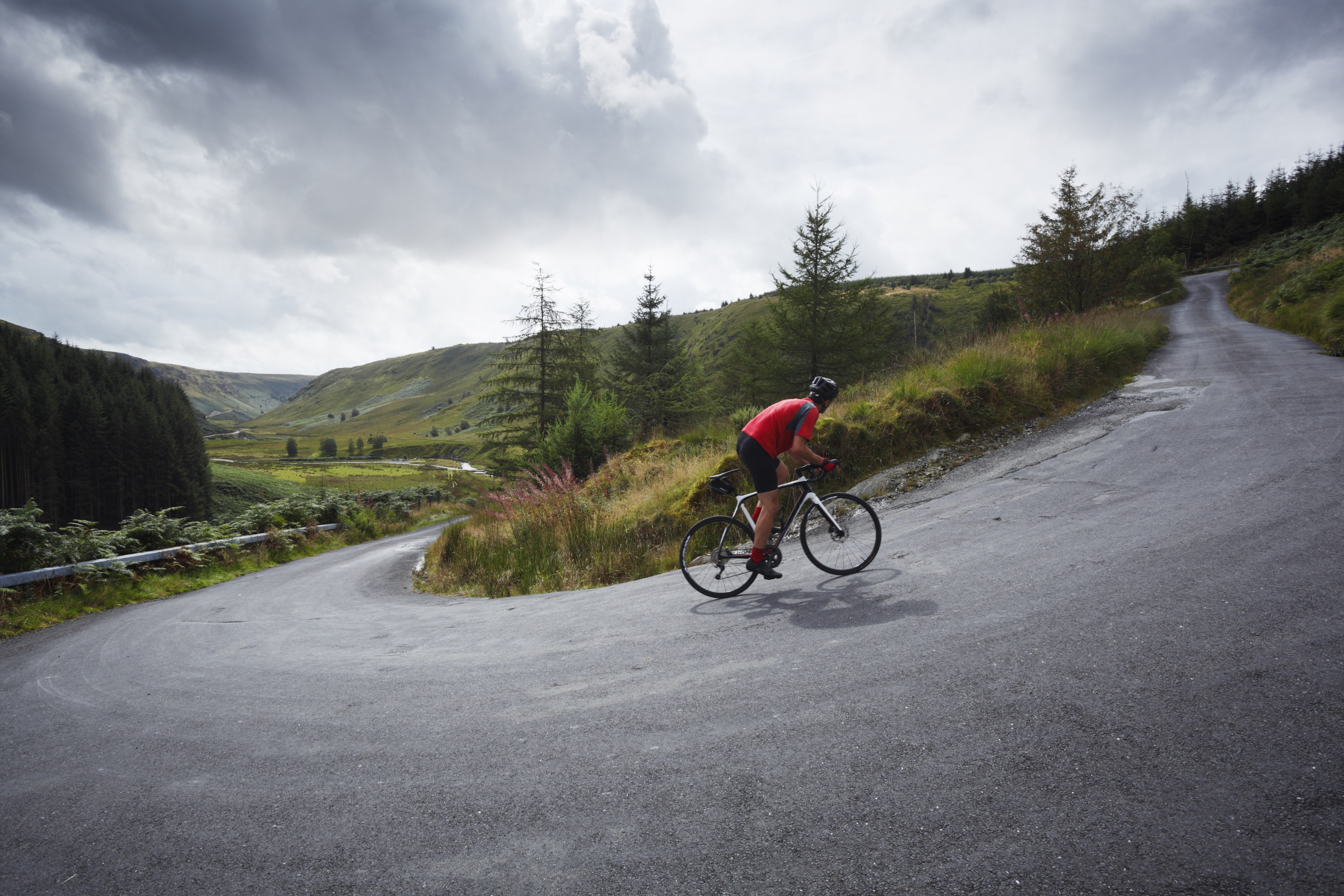

Hills are where the heart is. Ask any cyclist to list off the riding locations that they find most most inspirational and most memorable, and the chances are you will be dealt out a pack of upward gradients.
It might be the high of having tried hard, the feeling of achievement of having conquered the terrain, or perhaps the associated views or the romance of the Tour de France mountain battles, but we cyclists can't get enough of it.
The trouble is, while we love hills, that love is largely unrequited. Hills don't care, and they will bite you back in an instant if your fitness isn't up to scratch. Some are more vicious than others, of course, and they are the ones that ruthless event organisers often to feature in major challenge rides, or more topically for the time of year, the UK hill-climb calendar.
Hill-climb season is in full swing in the UK, and the British National Hill-Climb Championship is just around the corner. It will be held on Dipton Mill Road in Hexham, Northumberland on October 27. A 1.2km climb with a 9.9% average and ramps of over 13%, it's the perfect example of the short, sharp UK climb.
One of the keys to riding hills quickly, says TrainSharp coach Jon Sharples, is not to overreach.
"The most important thing with hill climbing for anyone is just to not start too hard," he says. "You've got to respect the effort."
Hard training sessions, he explains can get a rider accustomed not just to how an all-out hill effort feels, but also to where their limits are.
Get The Leadout Newsletter
The latest race content, interviews, features, reviews and expert buying guides, direct to your inbox!
"By training really hard, you find where that tipping point is of getting yourself into trouble," he says, "and you know what happens when you do that, so you manage your expectations and you have respect."
In other words, hills can be great, very rewarding, but you do need to work for that reward.
To help out with this, we pulled together some of the most dastardly but effective sessions we could find – sessions loved (OK, not loved, but certainly relied on) by some of the best climbers in the UK and beyond.
Tom Bell: On target
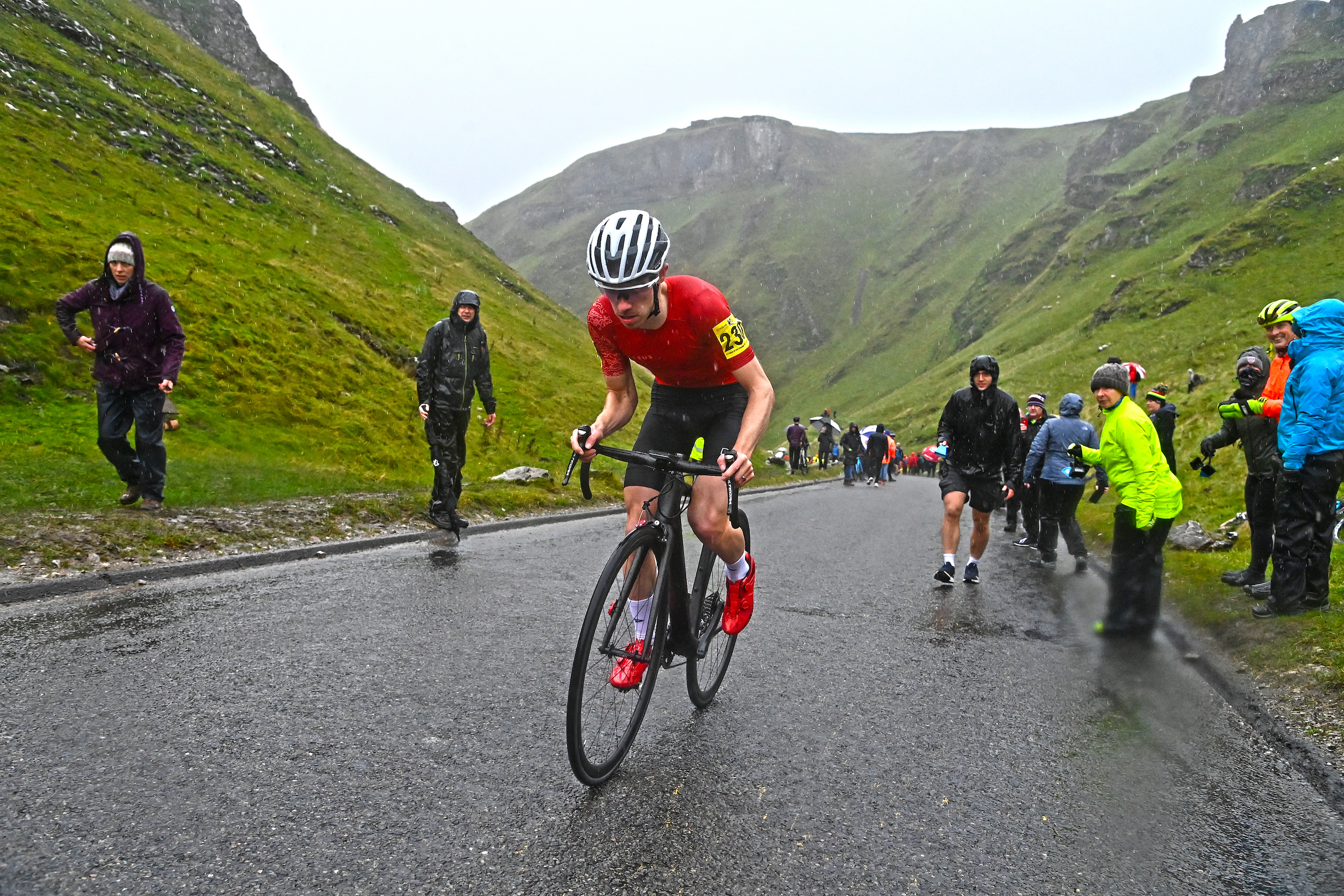
The 2021 UK men's hill-climb champion emphasises the mental as well as the physical element to this session: "It is principally designed to be used within the hill climb season to both physiologically and psychologically prepare for a weekend's race. What this set of efforts does is allow you to dial in the feeling of riding at that target power output, and become familiar with what it feels like before the race effort, which I have found is usually quite confidence inspiring."
The workout
Duration: 60-90min
The basics: 40min warm-up, 4-6 intervals with 3min rests, warm-down
The details:
- 40min Z2 warm-up including 2 x 2.5min efforts at 105-110% of FTP in the second half
- Then perform 4-6 intervals at target wattage, with intervals adding up to a total duration of around 50% more than your target effort. (Eg If you're anticipating a 4min effort on your target hill or event, you could do 6 x 1min efforts at target watts). Rest 3min in-between.
- 10-15min cool-down
Bithja Jones: Evil tabata
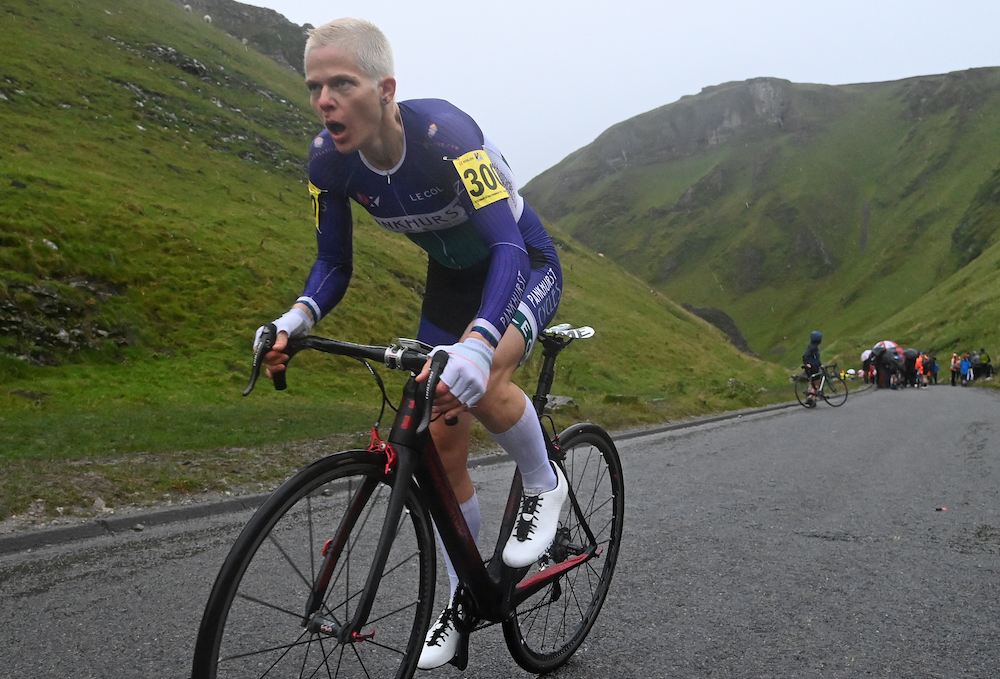
Double national hill-climb champion Bithja Jones says that when she was preparing for her first successful crack at the title in 2020, she did no structured training at all. The following year, however, she signed up with coach Matt Clinton, and the session below became a favourite – kind of.
"It was more of a hate/love thing. It was proper, proper hard. I remember once I was doing the session, my eight-year-old daughter was watching me. After watching me for a little while, she said, 'Mummy, what's the name of your coach?'. I told her it was Matty Clinton, and she said 'I think Matty Clinton is evil'. That's how hard those sessions are!"
The workout
Duration: 40-55min
The basics: 20min warm-up, tabata style intervals, cool-down
The detail:
- 20min warm-up
- 20sec all out, followed by 10sec recovery
Repeat 10 times
Optional: 10-15min easy riding then repeat the 10 x 20sec block.
- 10-15min cool-down
Jon Sharples: 5-in-3-in-1

This is a workout that can translate well between road racing and hill-climbing, says Sharples, a respected coach who has worked with some of the world's top riders.
"It's a classic," he says of his training session below. "You're going much, much harder at the end. That's really where you can let it all go."
The workout
Duration: 90-120min
The basics: 20min warm-up, three sets of five intervals focusing on different systems, 15min warm down
The detail:
- 10min Z2 warm-up
- 3 x 30-second bursts at 120% FTP, with 30sec recoveries, to prime the legs
- 5min easy spinning
Intervals (1-3min efforts, 5min easy spinning between sets)
Set 1: (VO2 max intervals)
- 5 x 3-minute efforts at ~120% FTP, 2min easy recoveries
Set 2: Anaerobic Bursts
- 5 x 1-minute efforts at 140-150% FTP, 1min easy recoveries
Set 3: Mixed-Climb Intervals
- 5 x 2-minute efforts at 110-130% FTP, 2min easy recoveries
Within each (set 3) interval: start hard (first 30sec at 130% FTP); settle into 115% FTP for the middle 1min; sprint for the final 30sec at max effort (above 150% FTP)
- 15min easy spinning cool-down
Ed Laverack: Pharoah-cious pyramids

Laverack is the 2019 UK hill-climb champion, and was the men's silver medallist last year
This is one of his favourite sessions, with blocks that start very manageably and build to super-hard over the course of 10 minutes. By the time you get to the one minute effort you mightn't feel that strong, but as Laverack says: "Your one-minute effort is very poor but in terms of actual output your body is working extremely hard at that point. It's less about the power, it's more about the effort."
The workout
Duration: ~50min
The basics: after warming up, the intervals are a one-sided 'pyramid', starting with short efforts and long rests, building to long efforts.
The detail:
- Warm up with at least 15min of easy riding, ideally with a few brief efforts to prime the legs and lungs
- Pyramid intervals (as hard as you can manage)
10sec hard / 50sec easy
20sec hard / 40 easy
30sec hard / 30 easy
40sec hard / 20 easy
50sec hard / 10 easy
1minute hard
- 10min easy riding and then repeat
- Cool down with 10-15min easy riding
Illi Gardner: Riding to the terrain
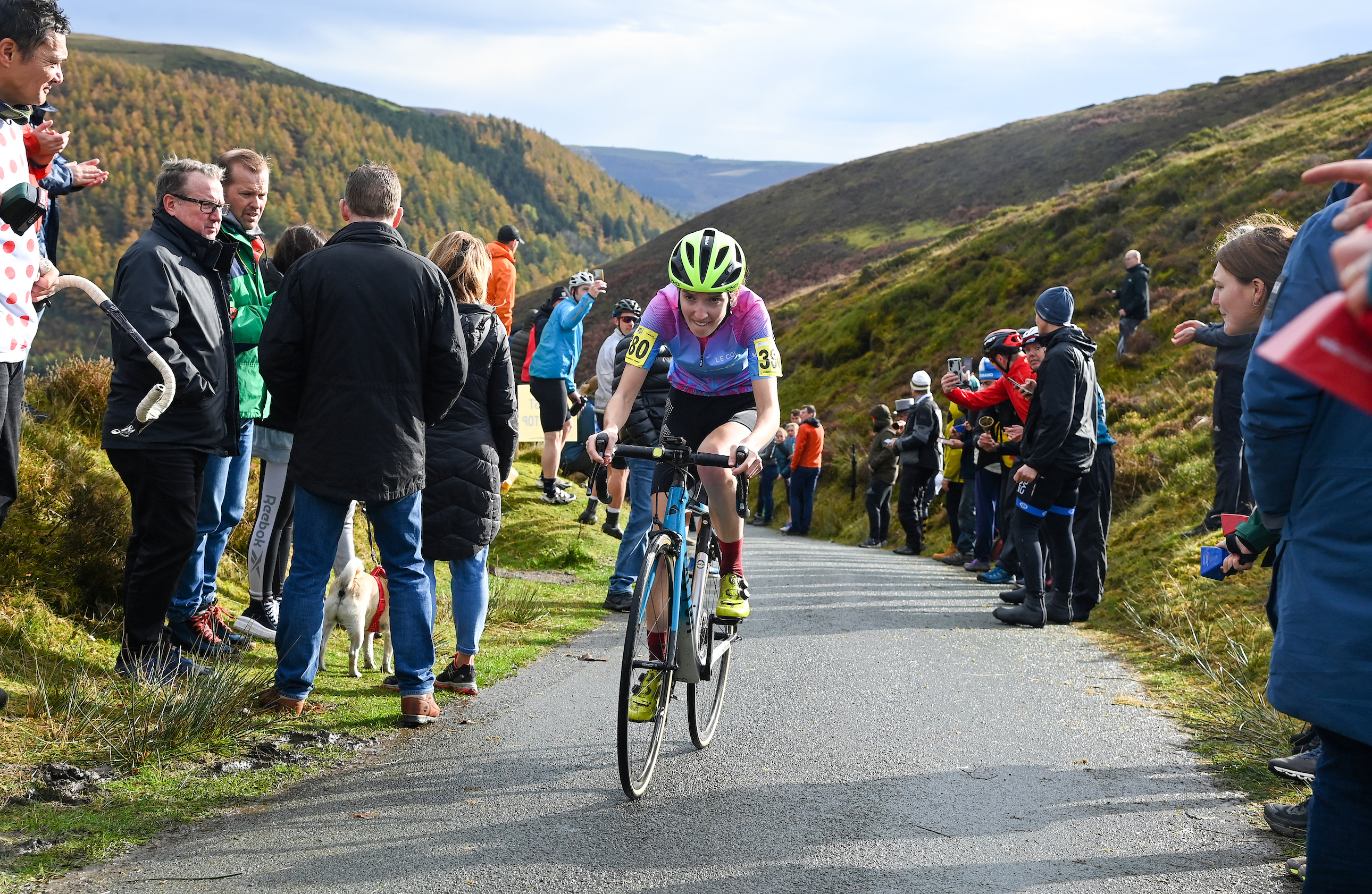
"I very rarely do properly structured sessions," says current UK hill-climb champion Gardner. "I usually just try and replicate exactly what I'm training for. During hill-climb season my weekly hours are the lowest of the year since the events are all relatively short."
Gardner, who holds Strava QOMs on Alpe d'Huez, Monte Zoncolan, and many more, rides her efforts in this session very much on feel. It's the sort of ride she often does in the week, and she adds: "It's a great way to get in a good workout in a short time, hitting all the zones whilst also being focused on a specific type of effort… it's something that seems to work and that I enjoy!"
The workout
Duration: ~60min
The basics: 15min warm-up, three or four hill efforts of 5-10min each
The details:
- 10-15 minutes warm-up
- 5-10 minute all-out hill effort, riding on feel. Gardner says she finds it a beneficial way to get used to 'riding to the terrain' – investing more where an individual climb demands it, rather than sticking rigidly to a power.
- Following this with an easy spinning recovery before hunting down two or three more similar climbs.
- Cool down with 15min easy riding
Andrew Feather: Prime time
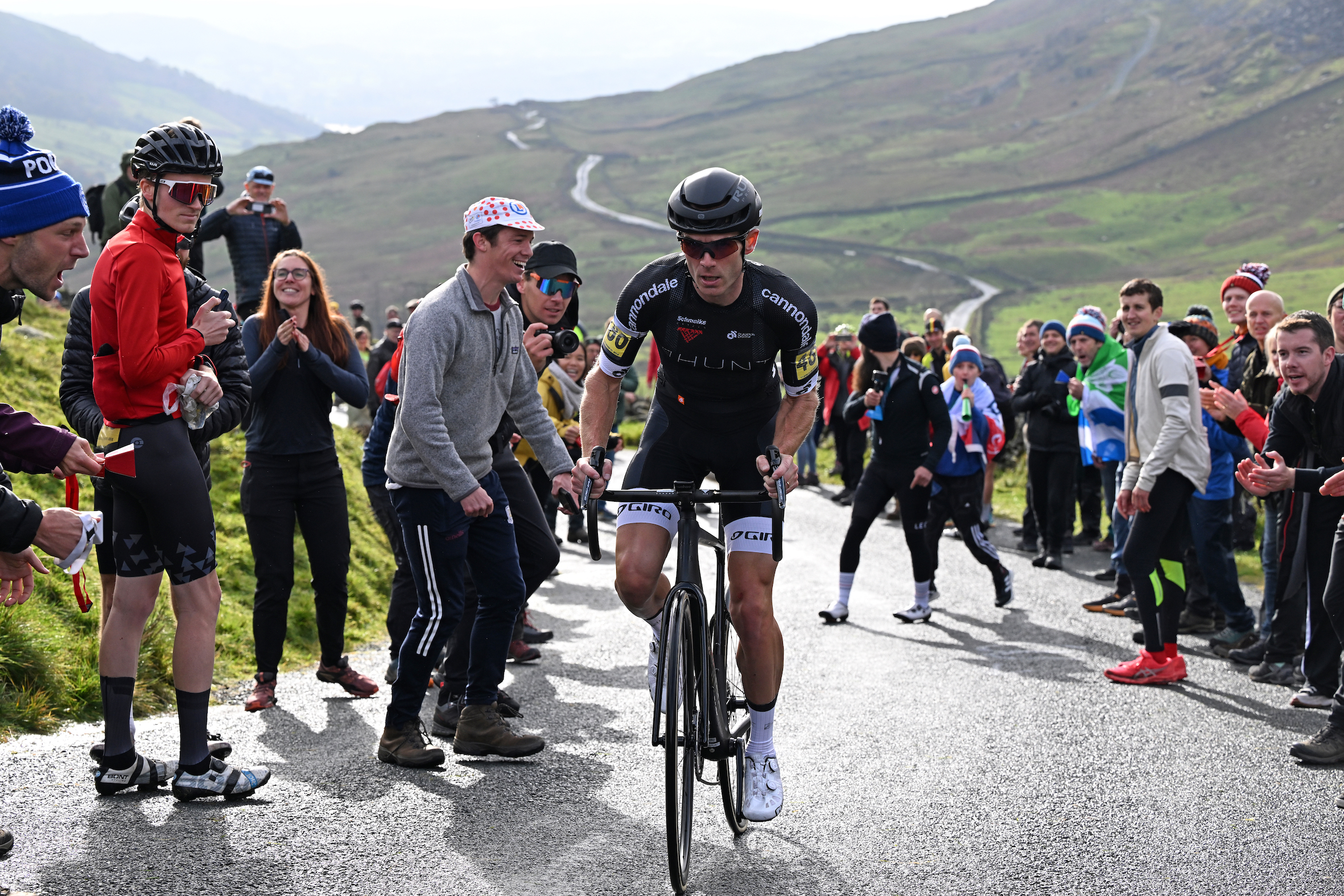
If Feather wins this year, it would be his third consecutive Hill-Climb Championship victory. Like his fellow title defender Gardner, his favoured session is not particularly structured, though it is clearly an approach that works well for him.
"I try and focus my efforts on a similar length and gradient to the British Hill Climb Championship," he says. "It's helpful to get used to riding at a high power on climbs during training – with time, your body learns how to adapt to the effort which is key to unlocking your best performance at the event."
"Other than replicating those specific efforts, my advice is to just enjoy it," he adds. "Listen to your body – if you're tired, take it easy and recover. There's always tomorrow and that climb will still be waiting for you!"
The workout
Duration: 45min upwards
The basics: warm-up, two or three efforts, cool down
The detail:
- Feather does not specify a warm-up, so simply ensure you're well ridden in, ideally with a few brief efforts to prime the body
- Two or three efforts at high power, on a similar length climb to the one you are targeting
- 10-15min cool-down

Thank you for reading 20 articles this month* Join now for unlimited access
Enjoy your first month for just £1 / $1 / €1
*Read 5 free articles per month without a subscription

Join now for unlimited access
Try first month for just £1 / $1 / €1
After cutting his teeth on local and national newspapers, James began at Cycling Weekly as a sub-editor in 2000 when the current office was literally all fields.
Eventually becoming chief sub-editor, in 2016 he switched to the job of full-time writer, and covers news, racing and features.
A lifelong cyclist and cycling fan, James's racing days (and most of his fitness) are now behind him. But he still rides regularly, both on the road and on the gravelly stuff.
-
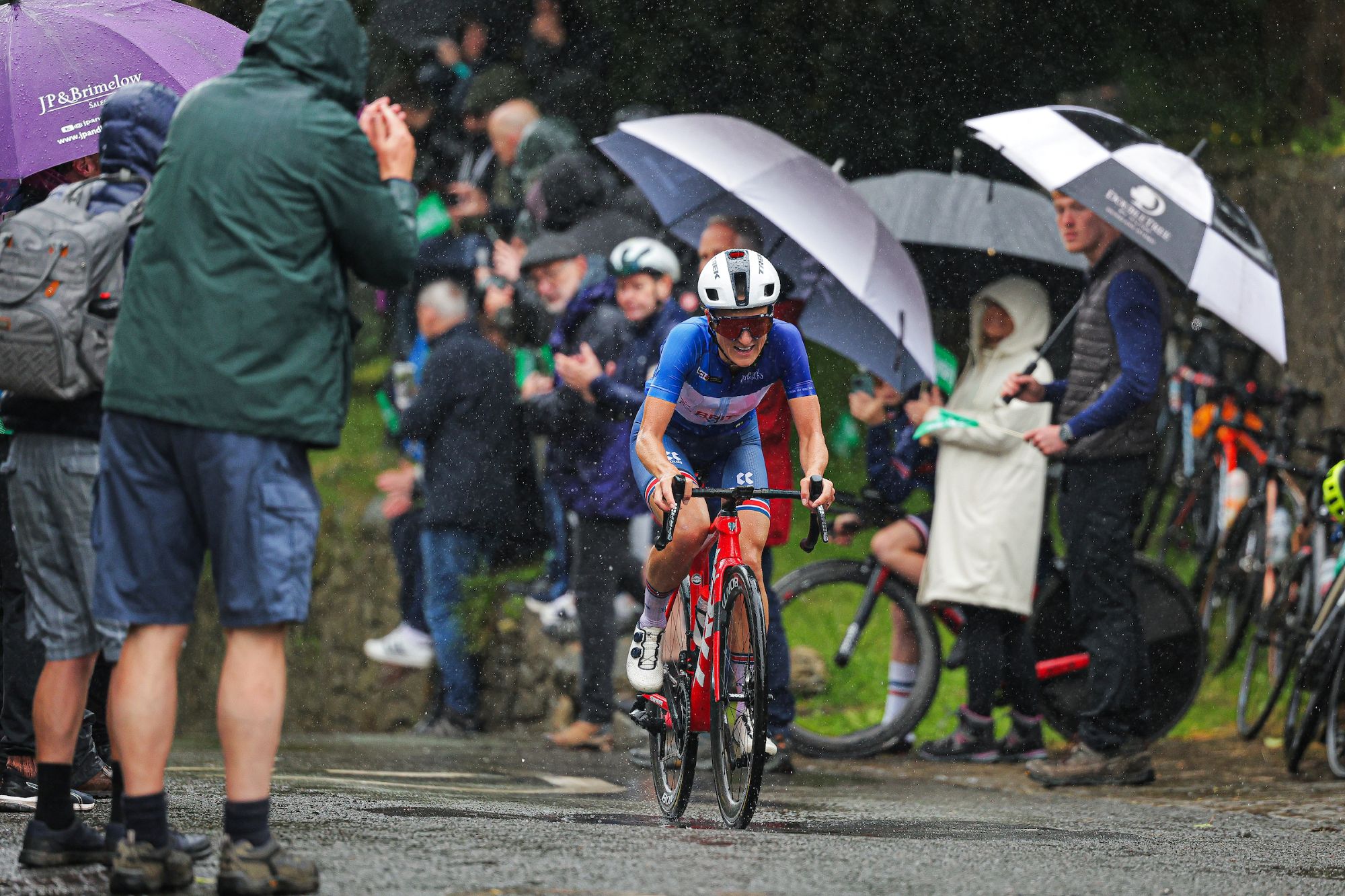 FDJ-Suez, SD Worx-Protime, Lidl-Trek confirmed for Tour of Britain Women as strong list of teams announced
FDJ-Suez, SD Worx-Protime, Lidl-Trek confirmed for Tour of Britain Women as strong list of teams announced18 teams set to take part in four-day WorldTour stage race
By Tom Thewlis
-
 Cyclists could face life sentences for killing pedestrians if new law passed in England and Wales
Cyclists could face life sentences for killing pedestrians if new law passed in England and WalesReckless cycling currently carries a maximum two-year jail term
By Tom Thewlis